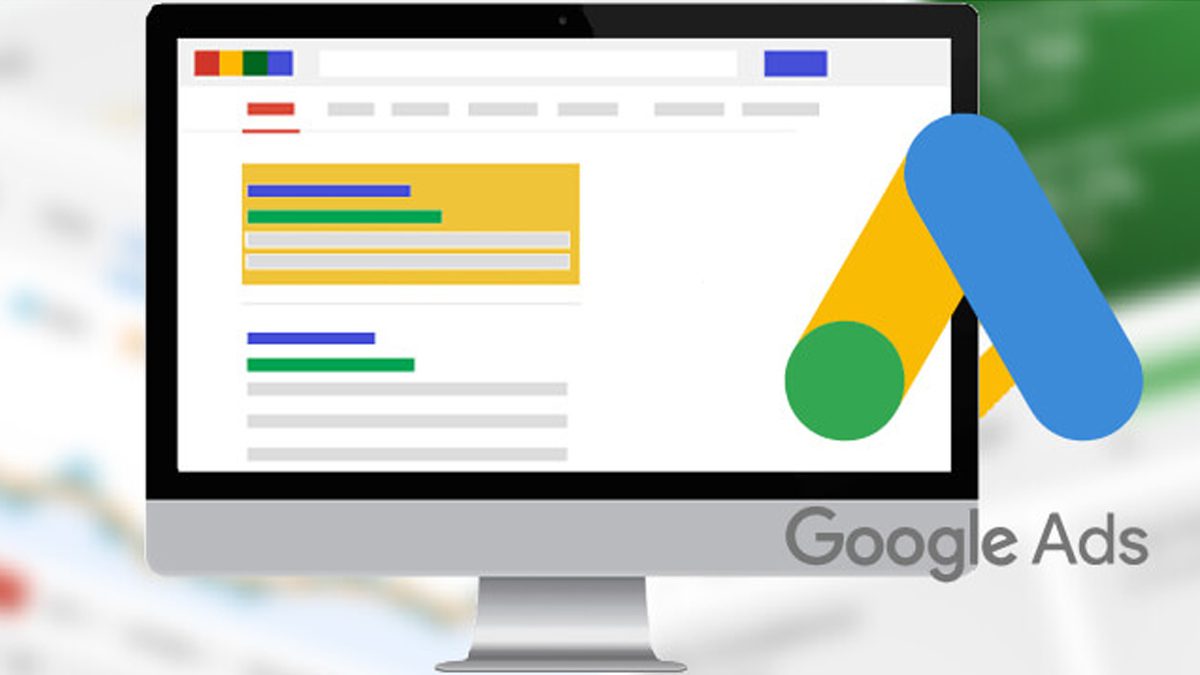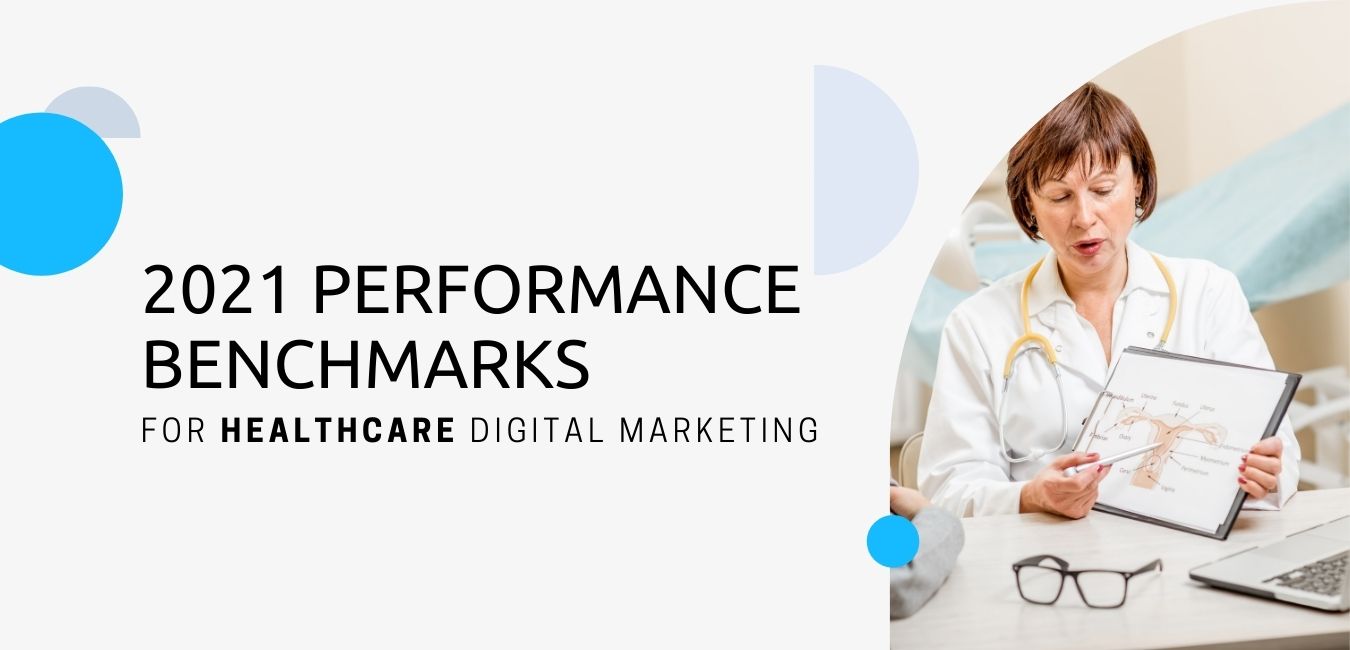2021 Performance Benchmarks for Healthcare in Digital Marketing in terms of Search Engine Optimisation (SEO), PPC – Google AdWords, Website Performance, Email Marketing, and Conversions.
What exactly is “digital healthcare marketing?” Does it mean that your dentist is posting before and after snapshots in an online Smile Gallery on Facebook? In addition, will your orthopedic surgeon share videos of patients that have made a miraculous recovery from a partial knee replacement?

Does “online healthcare marketing” describe the newsletter that you received from your primary physician reminding you of your upcoming physical? Or does it mean all of the above?
It’s wild out there for the healthcare industry and marketers and I’m here to help you by giving you the necessary information and numbers you’ll be needing to conquer it.
What is a good number for [insert digital marketing statistic here]?
Email marketing, Facebook ads, Google Ads, and search engine optimization (SEO) all come with a unique set of metrics that can make or break your digital marketing strategy.
Continue to read more about the most important metrics to evaluate for each of these services. We’ve presented the data clearly and scientifically so you can see how you stack up online.
SEO BENCHMARKS FOR 2021

Today, more than ever, it’s important to show up in search results when people are looking for medical information.
Searchers rely on your medical expertise. Therefore, writing quality content on your website can help you gain valuable rankings on Google and show up higher in search results.
Optimizing your healthcare search engine optimization (SEO) allows you to improve website
performance and convert more traffic.
SESSIONS PER USER: 1.4
When users return to a healthcare website, it means that the information shared is trusted so people come back and read.
Sessions per user looks at how many times a specific user has returned to your website within a specified date range. It shows the reengagement of a user to your website. This could mean
they are researching more of what your practice does or are coming back to you for reliable information.
Littledata recently surveyed more than 3,500 sites and reported 1.4 sessions per user as an average. If your website has 1.6 sessions per user, it ranks in the top 20% of websites; 1.9 sessions ranks in the top 10%.
AVERAGE SESSION DURATION: 2 MINUTES
The average session duration is the average amount of time users spend on your website per person. This shows how long on average, people are on your website interacting with your content.
The benchmark for this category varies depending on which industry you’re in. For large websites the average is two to three minutes.
Do note that if you have a small website, two minutes may already be a lot. If you have a big one, two minutes is a good amount of time. The simple explanation here is the longer the user spends on your website, the more engaged they are.
PAGES PER SESSION: 3
Pages per session is the average of how many pages each user views before leaving your site. The more pages they visit, the higher their engagement.
Both Spinutech and Hinge Marketing noted two or more pages per session is good.
Similar to average session duration, if you have a website with minimal pages, three pages may be difficult for users to average. Don’t let that discourage you, though; work on ways to funnel users through your website easily.
BOUNCE RATE: 60%
The bounce rate in Google Analytics looks at the number of users who came to the website yet didn’t click on anything and left.
A 0% bounce rate is unrealistic, yet a 100% bounce rate can happen. Which is why it’s important to make sure your pages are optimized with the right information and clear calls to action.
When someone searches for the answer to a question and lands on a page on your site and the page gives them the answer they need, they’ll leave without further engagement. Thus, your bounce rate does not make or break your website stats unless your website is broken.
The average bounce rate goal to stay under is 60%, based on stats from Spinutech, Hinge Marketing, and Brafton.
FACEBOOK AD BENCHMARKS FOR 2021

No matter what kind of healthcare practice you’re promoting, Facebook already brings your audience together. That’s why it’s important to understand the data within Facebook.
According to Sprout Social, Facebook’s 2.45 billion users saw 37% more ads in 2019 than years past. Since Facebook has an impressive library of data with which to find your ideal healthcare audience, and since the cost of a click is less than a cup of coffee, it’s easy to find and attract the right kind of traffic to your website on any day of the week.
The ads you show to your qualified healthcare audience can take many forms, creating a deep pool of data and insights. If you’re like most healthcare practices, you don’t have much time for diving into marketing data — especially when you’re recovering from the effects of a pandemic.
COST PER CLICK (CPC): $1.32
Facebook ads is a pay per-click system, so cost per click (CPC) is a valuable KPI for a few reasons:
- It provides insight into the competition for the audience’s attention.
- It gives a clear indication of which content Facebook thinks is the most engaging.
- It evaluates the quality of audiences within the Facebook ad tool.
For you to get below this benchmark, consider trying a strategic blend of high-value lookalike audiences, retargeting audiences, and interest based audiences. This will allow you to achieve very low CPC on Facebook ads.
CLICK-THROUGH RATE (CTR): 0.83%
Next, click-through rate (CTR), which is also based on traffic-oriented data.
There are many percentages in Facebook advertising, but this is the most holistic view of the clicks that occur on an ad. CTR is the percentage of impressions that resulted in clicks to the healthcare practice’s website or other assets within Facebook.
You can increase your CTR the same way with CPC which is a strategic blend of high-value lookalike audiences, retargeting audiences, and interest based audiences.
COST PER LANDING PAGE VIEW (CPLPV): $3.91
Facebook ads should drive only the most qualified healthcare leads to your site.
For this reason, we use the metric of cost per landing page view (CPLPV), which is calculated with traffic-based ads for clients with Facebook pixels installed on their sites.
Cost per landing page view shows the number of times a person clicked on your ad link and successfully loaded your landing page.
For you to hit this benchmark, focus on satisfying the experience of your visitors. From carefully targeting, ad creative, and destination page. To maintain the quality of your ads always give importance to testing.
GOOGLE ADS BENCHMARKS FOR 2021

Where your healthcare practice lands on the search engine results page (SERP) matters.
Your goal is for your practice to appear as high on the page as possible, since 90% of searchers click on the first result. With Google Ads you can place your website above the competition making potential clients click on you rather than the latter.
COST PER CLICK (CPC): $2.62
With Google’s click algorithm, your practice’s cost per click (CPC) can fluctuate based on several factors, such as:
- Quality score
- Competition
- How much you’re willing to bid
Since Google Ads are a pay-per click system, you’re only billed when someone actually clicks on the ad — which will show up when Google deems it relevant to the search.
CLICK-THROUGH RATE (CTR): 3.27%
The health and medical industry can be found at the top when it comes to average click-through-rate (CTR) in Google Search Ads.
CTR is an important metric to watch when measuring your Google Ads success. This is measured by taking the number of clicks divided by the number of impressions that the campaign received.
Google pulls CTR, along with several other metrics, into its bidding system that computes CPC. This is why maintaining high CTR by writing highly relevant ad copy that speaks to the searcher.
CONVERSION RATE: 3.36%
The third benchmark you need to monitor for Google Ads success is your conversion rate. This is the percentage of goal conversions that were completed from the number of clicks the campaign received.
You can set up specific goal conversions that are best suited for your practice in both Google Ads and Google Analytics. These goals may be a service page view, a call to your clinic, or a form submission.
According to WordStream, health and medical conversion rates for Google Search Ads fall right in the middle of the pack, with the average across all industries at 3.36%.
EMAIL MARKETING BENCHMARKS FOR 2020

In the digital marketing world, email reigns over all other platforms. In fact, the conversion rate for email is more than three times higher than social media.
Email is profitable. For every dollar a healthcare business spends on email marketing, it can expect an ROI of $42. Every practice should be using email as part of its healthcare marketing strategy. (If you’re not, let’s talk!)
OPEN RATE: 19.7%
Open rate is the first in the list because if they don’t open your email they won’t engage too!
Open rate is the percentage of people who opened your email out of those who received. Improving your open rate is the first step in improving your email success.
Campaign Monitor reports that the average open rate for healthcare emails is 19.7% in 2020.
You can improve the open rate of your healthcare marketing emails by testing the subject line, sender name, send time, or recipient list. For example, an email sent to a very small recipient list may have an unusually low or high open rate compared with one sent to a larger list.
CLICK-THROUGH RATE: 4.48%
Next, we’re looking at click-through rate (CTR): the percentage of people who click on a link within your email out of those who open it.
CTR is an important metric because it tells you whether or not your email entices your audience to actually take an action in response to your message. It helps you identify whether your email is achieving its goal.
According to Constant Contact, the average CTR for healthcare marketing emails is 4.48%.
You can improve your CTR by focusing on engaging design, clear messaging and calls-to-action, and regular A/B testing.
UNSUBSCRIBE RATE: 0.21%
Unsubscribes are not always a bad thing. After all, it’s a waste of your time to send an email to people who aren’t currently interested in your content or product.
Unsubscribe rate measures the number of email recipients who elected to no longer receive future emails from you.
It’s normal to have a consistent, low number of unsubscribes. After all, that reflects the ebb and flow of the buyer’s journey.
GetResponse reports an average unsubscribe rate of 0.21% for healthcare marketing emails.
BOUNCE RATE
- Hard Bounce Rate Benchmark: 0.3%
- Soft Bounce Rate Benchmark: 0.4%
Lastly, bounce rate measures the number of emails sent compared to the number of emails delivered.
There are two main types of bounces: hard and soft.
A hard bounce often indicates a permanent error, such as a nonexistent email address. Many email clients will exclude these contacts from future email sends. If yours doesn’t, you should manually remove them in order to protect your sender reputation. (You don’t want to end up in the spam folder, after all!)
A soft bounce indicates a temporary technical problem, such as one with the recipient’s email server. MailChimp reports the average healthcare marketing email bounce rates at 0.3% for hard bounces and 0.4% for soft bounces.
There’s not much your healthcare practice can do to prevent hard and soft bounces, but it’s a good idea to clear out the contacts who aren’t receiving your emails because of bounces.
The key is to routinely remove bounced email addresses to keep our clients’ contact lists clean and relevant.
Also Read, HOW CORE WEB VITALS AFFECT GOOGLE’S ALGORITHMS
Source: https://9clouds.com/wp-content/uploads/2021/02/2020-Healthcare-Benchmarks-Report.pdf
Subscribe to my YouTube channel: Casey Ordoña

